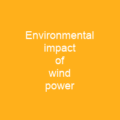Understanding the Wind: A Journey Through Its Many Faces
Imagine a world without wind. How would it feel? Would we still be able to sail across vast oceans or fly kites in the park? The wind, that invisible force that shapes our environment and influences our lives, is much more than just air moving around us. It’s a complex phenomenon with many facets, from the gentle breeze that rustles leaves to the fierce gusts that can topple trees.
The Causes of Wind
So, what causes this magical force? The primary drivers are differential heating between the equator and poles. This creates a pressure gradient, with air moving from high-pressure areas to low-pressure ones. But there’s more! The Coriolis effect, caused by Earth’s rotation, further influences wind patterns, making them swirl in specific directions.
Types of Winds
Winds are classified based on their strength and duration. Short bursts of high-speed wind are called gusts, while strong winds that last for a while are known as squalls. Long-duration winds have names like gale, storm, or hurricane, depending on their average speed.
The Impact of Wind
Wind has shaped our history and continues to influence it today. From ancient sailing ships to modern wind turbines, the power of the wind is undeniable. It’s a key player in weather patterns, affecting everything from seed dispersal to the spread of wildfires.
Measuring Wind
To understand wind better, meteorologists use various tools and scales. The Beaufort scale, for instance, provides an empirical description based on observed sea conditions. It has 18 levels, each representing a different speed range. This helps in predicting weather patterns and planning outdoor activities.
Wind Engineering
When it comes to buildings and infrastructure, wind is both friend and foe. Wind engineering studies the effects of wind on structures like bridges and skyscrapers. It’s crucial for designing safe and resilient buildings in areas prone to strong winds.
Numerical Weather Prediction
Modern weather forecasting relies heavily on numerical models that simulate atmospheric conditions. These models use complex equations, including the Navier-Stokes equations, to predict wind patterns accurately. This technology has revolutionized our ability to forecast severe weather events.
Wind in Nature and Culture
The concept of wind is deeply ingrained in human culture. In many mythologies, it’s personified as a god or supernatural force. From the divine winds that saved Japan from Mongol invasions to the fierce gusts that shaped the landscapes of ancient civilizations, wind has played a significant role.
Wind and Erosion
In arid climates, wind is a powerful agent of erosion. It moves small particles across vast distances, shaping landscapes over time. This process can be both destructive and creative, forming unique landforms and enriching soils with nutrients.
Wind in Sports and Recreation
The wind also plays a crucial role in various sports. From hang gliding to windsurfing, the power of the wind is harnessed for fun and competition. Understanding wind patterns is essential for athletes aiming to optimize their performance.
Wind’s Impact on Plants
Plants rely on the wind for seed dispersal, ensuring the spread of life across vast distances. This process, known as anemophily, is vital for maintaining biodiversity and supporting ecosystems. However, strong winds can also be detrimental to plant growth, causing damage and spreading pathogens.
The Future of Wind Energy
As we strive for sustainable energy solutions, wind power stands out as a promising option. With advancements in technology, onshore and offshore wind farms are becoming more efficient and cost-effective. The kinetic energy of air is harnessed to generate clean electricity, reducing our reliance on fossil fuels.
The Speed of Wind
Wind speeds can vary greatly depending on the location and time of year. On Earth, the fastest wind ever recorded was 20,000,000 miles per hour, but this is not typical. Strong winds are found on various planets, including Venus (300 km/h), Mars (400 km/h), Jupiter (220 mph), Saturn (840 mph), Uranus (540 mph), Neptune (890-670 mph), and HD 80606 b (11,000 mph).
Conclusion
The wind is a fascinating force that shapes our world in countless ways. From the gentle rustling of leaves to the fierce gusts that can reshape landscapes, it’s a powerful and ever-present element. Understanding its causes, effects, and applications can help us harness its power for good while respecting its potential dangers.

You want to know more about Wind?
This page is based on the article Wind published in Wikipedia (retrieved on January 24, 2025) and was automatically summarized using artificial intelligence.





